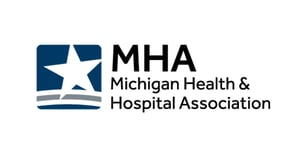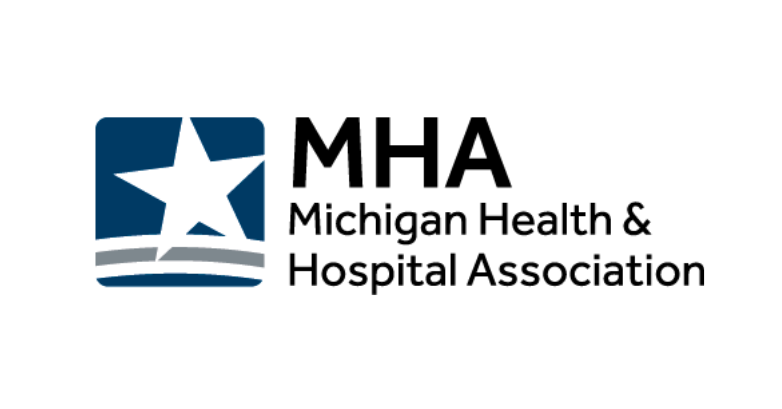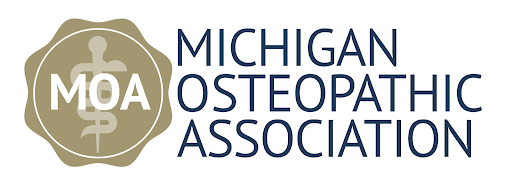
Chris Holman welcomes back Brian Peters, CEO, of MHA, the Michigan Health & Hospital Association, Lansing, MI.
To watch Briand and Chris discuss the MHA, and the new Economic Impact of Healthcare report, click play on the YouTube video shared below.
Welcome back, Brian, really quickly remind our audience about what the MHA is and its scope of services.
We wanted to have you back on as we understand MHA is releasing an Economic Impact of Healthcare report. What are the highlights?
How often does this report come out?
Were there any findings that stood out?
These reports are important for your membership, who else watches and takes note of this report?
Anything else that we should know?
Here are further details on the report:
Provides Nearly 572,000 Direct Jobs, 224,000 in Hospitals Alone
LANSING, Mich. — The Partnership for Michigan’s Health reports healthcare directly employed nearly 572,000 Michigan residents in 2020, demonstrating that healthcare continues to be the largest private-sector employer in the state despite staffing losses attributed to the COVID-19 pandemic.
The 2022 release of The Economic Impact of Healthcare in Michigan shows direct healthcare workers in Michigan earned $44.2 billion that year in wages, salaries, and benefits. Hospitals alone employed 224,000 individuals in the state in 2020.
Direct healthcare employment helps create additional jobs that are indirectly related to or induced by healthcare. These indirect, healthcare-supported jobs are held by more than 502,000 people who earned about $28 billion in 2020 in wages, salaries, and benefits. Together with their employers, the nearly 1.1 million workers in the healthcare sector contributed almost $15.2 billion that year in local, state, and federal taxes. These taxes include Social Security, income, motor vehicle, sales, property, corporate and more.
Data from 2020 shows the early impact the pandemic had on the economic strength of the healthcare sector in Michigan. In particular, the data illustrates the rise in labor costs as many nurses transitioned to contract labor with staffing agencies. Compensation for direct jobs in Nursing and Residential Care rose by about $200 million from 2019 to 2020, although the number of jobs fell by about 11,000. Specific to hospitals, the number of jobs fell by about 7,000 jobs from 2019 to 2020, but total compensation remained about the same.
The loss in jobs represents the initial exit of many healthcare workers due to burnout and stress associated with the pandemic. Both nationally and in Michigan, healthcare experienced a shortage of healthcare employees for several years and the pandemic caused a sudden loss of existing workers. With Medicare beneficiaries in Michigan increasing by more than 8% over the past five years to a total of 2.1 million people, Michigan needs more healthcare workers, now more than ever, to serve the changing needs of the state’s aging population.
The trend of nurses transitioning to contract labor is supported by recent research from the American Hospital Association, which found labor expenses per patient for hospitals increased 19% through 2021 compared to 2019. Increased labor expenses have a more profound impact on hospitals and health systems, as labor expenses account for more than 50% of total expenses for most hospitals. In addition, healthcare reimbursement is unable to quickly respond to inflationary pressures since rates are negotiated months in advance, presenting additional financial challenges when responding to sudden labor market demand.
The report was compiled by the Partnership for Michigan’s Health, which consists of the Michigan Health & Hospital Association, the Michigan State Medical Society, and the Michigan Osteopathic Association, all based in the greater Lansing area. It uses 2019 and 2020 data, which is the most recent available.
“This report demonstrates the unquestionable and significant role healthcare, and specifically hospitals, play in Michigan communities,” said Michigan Health & Hospital Association CEO Brian Peters. “Not only have they played a vital role in the care and treatment of patients, but they remain far and away the leading employers and large drivers of economic activity.”
“Healthcare careers are not only extremely rewarding but crucial to our society,” said Kris Nicholoff, executive director of the Michigan Osteopathic Association. “While healthcare careers remain in high demand, the data shows there are over a million individuals we owe our gratitude toward for providing care during one of the most trying and tumultuous years in modern history.”
"Physicians are and will continue to remain a key driver of healthcare employment and economic growth,” said Julie L. Novak, CEO of the Michigan State Medical Society. “Investing in physician-led team-based care and healthcare careers is key to the economic vitality and health of our state, local communities, and residents. Physician practices, hospitals, and other care settings offer good paying and stable jobs in careers that truly improve and save lives.”
Hospitals and healthcare providers remain focused on ensuring these jobs meet the needs of their employees, from offering competitive compensation and benefits to ensuring a safe and supportive work environment. The Partnership for Michigan’s Health joined several other organizations in the Healthcare Workforce Sustainability Alliance to advocate for state funding to support the recruitment, retention, and training of healthcare workers. These efforts were successful in Public Act 9 of 2022 which allocates $300 million in state funding to support Michigan’s healthcare workforce.
The 16th and 17th editions of The Economic Impact of Healthcare in Michigan were compiled using IMPLAN® cloud software to quantify healthcare’s significant economic impact in the state. The data represents direct, indirect, and induced healthcare jobs; taxes paid by those workers and their employers; and salaries, wages, and benefits earned. The report is an online, interactive tool that allows users to examine these economic impacts from a statewide perspective and by region, county, or congressional district. The data from both 2019 and 2020 are provided in two separate data tables. It is available at www.economicimpact.org.
About the MHA:
Based in greater Lansing, the MHA is the statewide leader representing all community hospitals in Michigan. Established in 1919, the MHA represents the interests of its member hospitals and health systems in both the legislative and regulatory arenas on key issues and supports their efforts to provide quality, cost-effective and accessible care. The MHA mission is to advance the health of individuals and communities.
About MOA:
The Michigan Osteopathic Association (MOA) is the largest statewide osteopathic organization representing osteopathic physicians, interns, residents, and medical students in Michigan. Since 1898, the MOA has been dedicated to the promotion of quality patient care and to the educational, informational, and legislative needs of its members.
About MSMS:
The Michigan State Medical Society is a professional association of nearly 16,000 Michigan physicians. Its mission is to improve the lives of physicians so they may best care for the people they serve. Please visit www.msms.org for more information.
###















